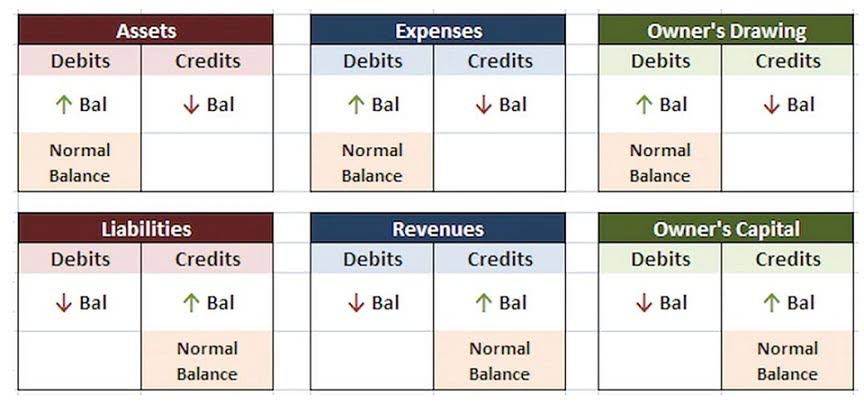
Control risk played a major part in the Enron scandal – the people providing the misleading numbers were widely respected and some of the most senior people in the organization. The audits were thus being carried out on the wrong numbers and no one knew until it was too late to do anything about it. Excerpts from the audit report by Deloitte & Touche LLP for Starbucks Corporation, dated Nov. 15, 2019, follow.
- Accounting software like Xero cuts down on the human error element of audit risk, saving time and money.
- Enron was regularly audited by what was perhaps the most respected auditing organization in the world, but it was still able to misreport figures and ended up losing money for hundreds of thousands of people.
- Generally, an auditor will perform a control risk assessment concerning the financial statement level of risk and the assertion level of risk.
- This uniformity is essential for maintaining the quality and reliability of the audit process, reducing the potential for oversight and errors.
- The client is said to demonstrate a high control risk of the controls if a specific assertion does not operate effectively or if the auditor deems that testing the internal controls would be an inefficient use of audit resources.
Paragraph 1: Opinion on the Financial Statements
They’re grappling with Big Data, AI predictions, and blockchain verifications. These technological advancements, while offering a slew of advantages, also usher in a new set of challenges. The risk of digital manipulation, cyber-attacks, and data breaches adds another layer of intricacy to the audit process.
Detection Risk
This uniformity is essential for maintaining the quality and reliability of the audit process, reducing the potential for oversight and errors. Regularly updating training programs and procedures also helps the audit team adapt to new regulatory changes and emerging industry practices, thereby staying current and competent in a dynamic financial landscape. The cash flow statement is the last financial statement analyzed for an audit.
Managing Audit Risk: Auditor Tools to Mitigate Risk
In light of these challenges, the traditional audit risk model, though foundational, may require augmentation. The three primary risks – control, detection, and inherent – remain at the core, but the contexts in which they operate are evolving rapidly. Organizations must have adequate internal controls in place to prevent and detect instances of fraud and error.
Control risk is considered to be high where the audit entity does not have adequate internal controls to prevent and detect instances of fraud and error in the financial statements. If a company hires an auditing company, the auditor from the external company will use the facts and figures provided by the company. There are many companies that have poor internal controls when it comes to data. People may misreport data or outright hide evidence of misdeeds from auditors because there were no internal controls to stop them, and the auditor will accept the data, assuming it can from a source of truth.
The Human Element in Audits

The tool helps the auditor decide on the types of evidence and how much is needed for each relevant assertion. Risks must be related to the risk arising in the audit of the financial statements and should include the financial statement https://www.bookstime.com/ assertion impacted. Similar to inherent risk, auditors cannot influence control risk; hence, if the control risk is high, auditors may need to perform more substantive works, e.g. test on a bigger sample, to reduce the audit risk.
The first version of ISA 315 was originally published in 2003 after a joint audit risk project had been carried out between the IAASB, and the United States Auditing Standards Board. Changes in the audit risk standards have arguably been the single biggest change in auditing standards in recent years, so the significance of ISA 315, and the topic of audit risk, should not be underestimated by auditing students. Understanding an entityISA 315 gives detailed guidance about the understanding required of the entity and its environment by auditors, including the entity’s internal control systems. Given that the focus of this article is audit risk, however, students should ensure that they also make themselves familiar with the concept of internal control, and the components of internal control systems.
- Inherent risk, control risk, and detection risk are the components that make up audit risk.
- The investor will key in on the third paragraph, where the opinion is stated.
- The auditors will nevertheless assess the risk values in some form, often by descriptive means.
- The audit risk model helps assess this level of risk, making it a useful tool to employ during the planning stages of any financial audit.
- With a greater understanding of the controls and procedures put in place, auditors can then pinpoint the areas where risks are higher.
- Inherent riskThis is the susceptibility of an assertion about a class of transaction, account balance, or disclosure to a misstatement that could be material, either individually or when aggregated with other misstatements, before consideration of any related controls.
- Risk assessment in auditing is complicated because it entails cataloging potential problems and conducting a dynamic analysis of how these risks interact within the context of the audit engagement.

Likewise, this can be done when auditors obtain sufficient appropriate audit evidence to reduce audit risk to an acceptable level. Analytical proceduresAnalytical procedures performed as risk assessment procedures should help the auditor in identifying unusual transactions or positions. They may identify aspects of the entity of which the auditor was unaware, and may assist in assessing the risks of material misstatement in order to provide a basis for designing and implementing responses to the assessed audit risk model risks. Generally, an auditor will perform a control risk assessment concerning the financial statement level of risk and the assertion level of risk. Therefore, performing such an assessment will require the auditor to possess a strong understanding of the organization’s internal controls. Inherent risk is the auditor’s assessment of the susceptibility to material misstatement of an assertion about a transaction class, an account balance, or an attached disclosure, quoted individually or an aggregation.
The components of audit risk model
- By understanding how the model is limited, auditors and companies can understand how to mitigate these and still provide the proper risk assessments.
- These include subjectiveness, lack of scope, the chance of fraud, expenditures of time and resources, and incomplete information.
- Audit risk is the risk that the auditor gives an inappropriate opinion on an audit engagement.
- The risk values are not readily quantifiable though and auditors use professional judgement to assess the risks.
